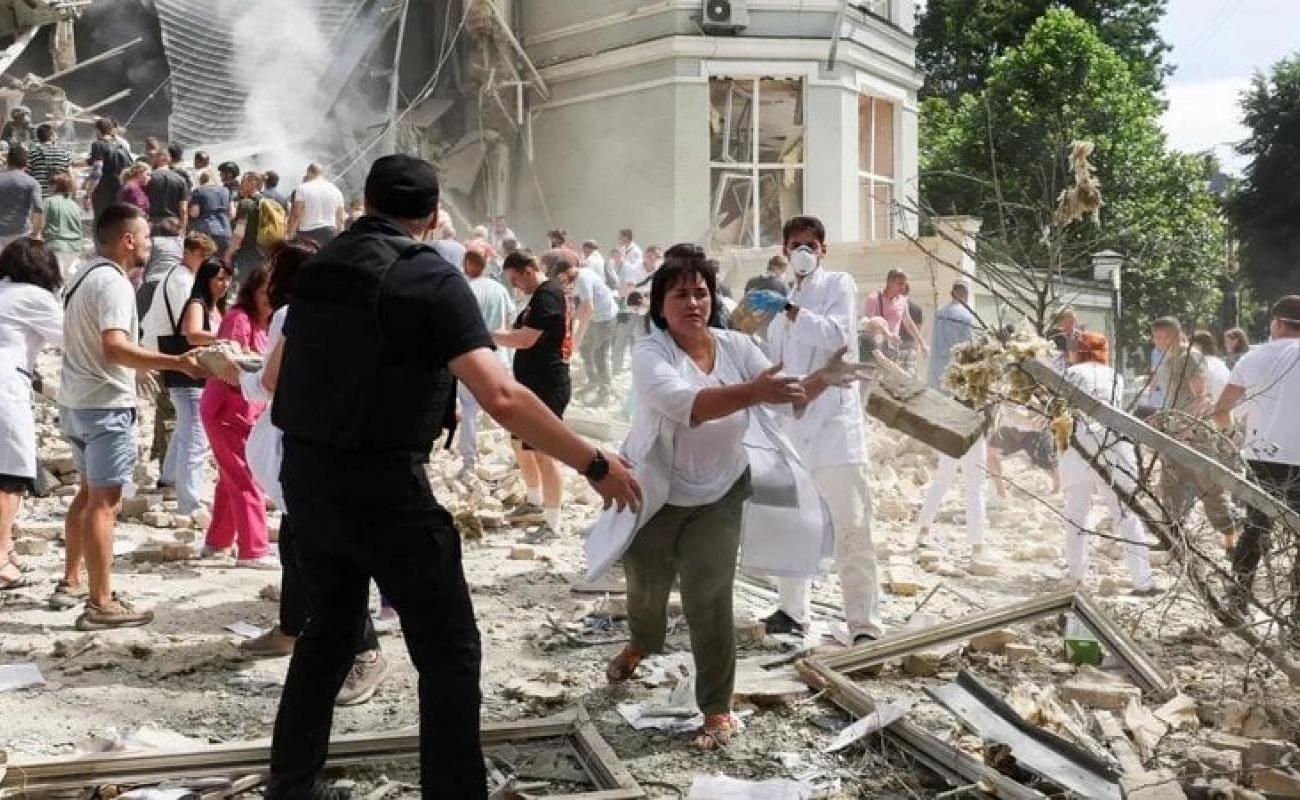Beyond brick and mortar: Ukrainian recovery in wartime — opinion

Since Feb. 24, 2022, Ukraine’s healthcare system has faced a range of challenges—of a scale unprecedented in the European context since 1945—created by Russia’s invasion and the resulting war.
The World Health Organization has verified 1,920 attacks on healthcare facilities, resulting in 162 deaths and 498 injuries. These include the deadly missile strike on the Okhmatdyt National Children's Hospital in Kyiv, and the follow-up strikes on a maternity hospital and medical center in the capital, which so shocked the world one month ago. Attacks on the healthcare system are a constant reality—as are the Ukrainians’ resilience and commitment to recovery.
Health system under continuous pressure
Ukraine’s economy is today 25% smaller than it was on the eve of the invasion—resulting in a huge rise in the poverty rate and widening geographic and socioeconomic health inequalities. More than six million Ukrainians have become refugees abroad, with a further 3.5 million displaced within the country. Among them are many thousands of doctors, nurses, midwives and other health professionals—leading to a nationwide shortage across the country, felt most acutely in the communities closest to the frontline.
In the face of these challenges, Ukraine’s health system has displayed extraordinary resilience. Across the country, including in the most war-affected areas, access to health care has been maintained—albeit, barriers to access still persist, with excessive out-of-pocket payments remaining a leading driver of unmet health needs, and internally displaced persons more likely to report barriers to access than those who’ve remained in their home communities. In the oblasts most affected by war, national and international humanitarian organizations are playing a critical but complementary role in providing medical services, with activities coordinated through a WHO-led “health cluster” structure.
Continuous recovery of health services in wartime
Recovery is underway—indeed, it has been ever-present since the early phases of the war. It has been led by national, regional, and local health system leaders, with crucial co-financing and support from national and international partners. Since the first days of the war Ukrainians have understood that a strong health system is needed, with disrupted health services being restored to provide safety and security for people, as a foundation for future economic development and growth.
By now, the international community also recognizes this. However, the level of support it provides must be stepped up to meet recovery needs. These have been estimated by the the World Bank, the Ukrainian government, the European Union, and the United Nations, at $873 million for 2024 alone—which is six times greater than the estimated amount of health-related humanitarian assistance to Ukraine, sitting at $145 million for 2024. But these estimates were made before the Russian offensive in Kharkiv Oblast, and the extensive missile attacks on the country’s energy infrastructure since March 2024, which have created new needs for the present and the coming winter.
Funding and its allocation
In addition to rebuilding damaged facilities, strengthening primary care, and additional investments in rehabilitation, mental health, and emergency care, and public health have been identified as core recovery priorities. That’s why we in WHO have installed modular primary care clinics—equipped with emergency generators—as well as medicine and cold chain systems, in Kherson, Kharkiv, Donetsk, Mykolayiv, and Sumy oblasts. And why we have supported health workers to provide primary care in remote areas and gain new knowledge through trainings available in-person and via modern digital learning platforms.
Decision-makers should also be aware of ongoing efforts to build a more efficient, higher-quality, and financially sustainable hospital network. We should also recognize and respond to regional differences in the nature and severity of war-related challenges, which are exacerbating health inequalities. After many discussions with stakeholders, we observe that, for local health leaders and communities in the front-line areas, terms such as ‘recovery’, and ‘reconstruction’ seem remote from day-to-day realities. Among the many challenges they face to maintain access to essential services, the loss of health professionals is perhaps the most pressing—especially at the primary care level, but also more generally.
Securing sufficient financial resources to recruit and retain staff is difficult. Much of the population (and disproportionately younger people) have left, and this has had a negative impact on the financial resources available to health facilities in these areas. Owing to the widespread attacks on the country’s infrastructure, access to electricity, water, and heating is also an urgent priority. In these areas, the focus of recovery is less on ‘building back better’, and more about ensuring the long-term sustainability of local health systems—from primary care and pharmacies to specialized services.
The WHO also recognizes that recovery is about more than ‘bricks and mortar’. It is also about building a strong, cohesive, inclusive society and economy, on which a strong health system depends. It is also about the trust in the health system among both health workers and the population. As a candidate for European Union membership, Ukraine has already made considerable progress in establishing transparency and preventing corruption, helping to build the social contract between government and citizens, and earning the trust of the international community—matters that will be critical for future efforts to build a healthy, secure, and prosperous Ukraine.
The WHO will continue to play a leading role in health system recovery in this broader sense—based on clear priorities, and clear principles of equity, transparency and accountability, which we encourage all stakeholders to help realize.
